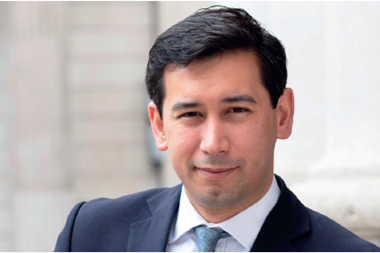Financial products and services marketed as green must make a clear and measurable difference to the transition to environmental sustainability, argues Ben Caldecott.
There is lots of debate about what constitutes a green financial service or product, and what more generally greenness amounts to. Most parties to that debate have assumed that holding green investments is sufficient to be green.
That is not, unfortunately, sufficient. Simply investing in green doesn’t mean you’ve made the world greener.
At least two conditions need to hold for a green financial service or product to make a difference to the real economy transition to environmental sustainability. We should want these two conditions to hold for every green marketed financial product or service.
First, the activity the financial product or service is encouraging should be green and/or the activity it is discouraging should be brown.
There are various ways we can determine whether something is green or brown and there is a very active debate about how that can be done.
Second, the activity must also make a clear and measurable difference in one or more of the following ways:
- A. reduce or increase the cost of capital for green or brown
- B. reduce or increase liquidity for green or brown
- C. provide or enable risk management of environmental-related physical and transition risks
- D. encourage or enable company adoption of sustainable practices
- E. support systemic change through spill-over effects

To tackle greenwashing by being sure we’re making a difference, we need to understand how green financial products and services contribute to the real economy transition in one of these five ways.
A (cost of capital) and B (liquidity) are the most directly and obviously important. They directly affect the availability and cost of capital for green and brown projects.
C (risk management) and D (adoption of sustainable practices) span a wide range of activities including climate-related financial disclosures, insurance, derivatives, investor engagement, and sustainability improvement loans.
E (spill over effects) is a catch-all for possible changes to consumer awareness, how green finance might beget more green finance, and the role of finance as a system that influences other systems, like politics.
Framework in action
Let’s put this simple framework into action, assuming we have settled the first issue, the question about what is green and what is brown.
Example 1 – Green bonds: there is little evidence to support the claim that standard recourse-to-the-issuer green bonds (where the repayment obligations reside with the legal entity issuing the bonds, not the projects or activities the bonds are being used to finance) contribute to A, B, and C, and a lot hinges on the claims their proponents make for D and E.
In contrast, non-recourse green project or infrastructure bonds (where the repayment obligations reside with the infrastructure project via a special purpose vehicle, not the sponsor) could also provide C to investors.
Example 2 – Sustainability improvement loans, where targets for the debtor help to both improve sustainability outcomes and reduce credit risk with the subsequent cost of capital reduction being shared between creditor and debtor: I think they can certainly support A, C, and D, and there is an argument to be made in favour of B and E.
Example 3 – Sustainable listed equity funds: indices based on deep and highly liquid benchmarks like the FTSE100 won’t contribute to A or B, might potentially contribute to C depending on the fund and the investor’s other holdings, and could contribute to D if the fund has an effective investor engagement strategy. If one is generous, they may possibly contribute to E, but that is very debatable.
“If a green marketed financial product or service doesn’t do at least A, B, C, or D and can’t evidence that it is actually making a difference, then we have a problem”
I could go on. But quite simply, if a green marketed financial product or service doesn’t do at least A, B, C, or D and can’t evidence that it is actually making a difference, then we have a problem.
Products and services just claiming E need to have a very clear theory of change and I am not sure any pass that threshold.
We could add a strict third condition, that of additionality. Even if the green marketed financial product or service is having a positive impact, would that impact have happened anyway given a counterfactual baseline? This gets us into comparing baselines and is fraught with difficulty.
I am content with simply demonstrating that a green marketed financial product or service is actually having a positive impact.
There has been surprisingly little interest and urgency in clarifying these impact pathways (A to E), in part, I suspect, because of how little difference many products and services being promoted actually have.
This issue is much more important than whether your portfolio contains lots of green. As we have discussed, you can have lots of green in a portfolio and have little or even no impact.
And yet this is precisely where the main focus is and has been so far. For example, the EU green taxonomy is trying to help investors understand how much green is contained within a portfolio.
Even if their plan to set binary definitions of green was convincing and compelling (I don’t think it is), it still doesn’t help investors understand how their green holdings actually make a difference to the real economy transition.
If a product is claiming – explicitly or implicitly – it will make a difference, it should be clear how it will do it and there should be an accountable and transparent way of measuring the claimed contribution over time.
Financial supervisors should be much stricter at authorising and monitoring such product and fund claims. The above framework can help them, and others, make this a reality.
Ben Caldecott is founding director of the Oxford Sustainable Finance Programme and an associate professor at the University of Oxford, as well as co-chair of the Global Research Alliance for Sustainable Finance and Investment and a senior advisor to the chair and CEO of the Green Finance Institute


















No comments yet